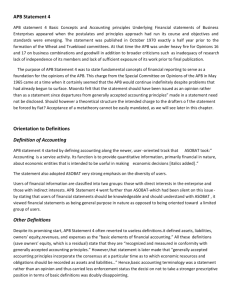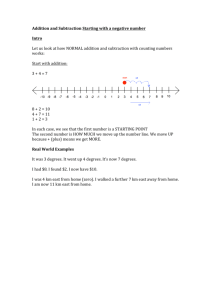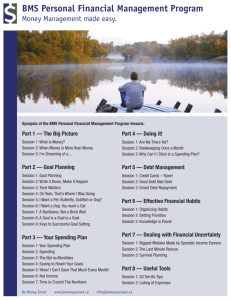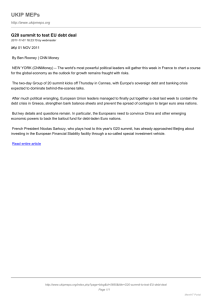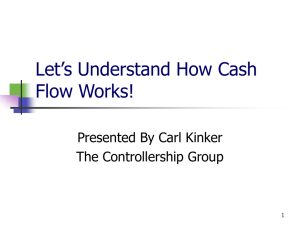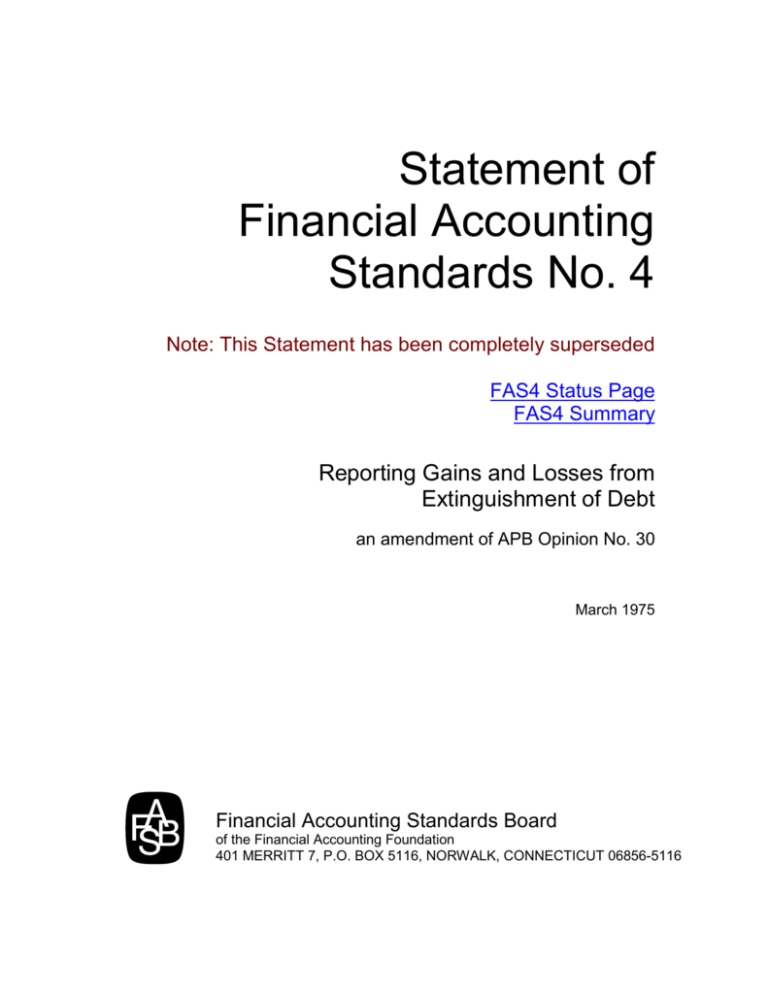
Statement of
Financial Accounting
Standards No. 4
Note: This Statement has been completely superseded
FAS4 Status Page
FAS4 Summary
Reporting Gains and Losses from
Extinguishment of Debt
an amendment of APB Opinion No. 30
March 1975
Financial Accounting Standards Board
of the Financial Accounting Foundation
401 MERRITT 7, P.O. BOX 5116, NORWALK, CONNECTICUT 06856-5116
Copyright © 1975 by Financial Accounting Standards Board. All rights reserved. No
part of this publication may be reproduced, stored in a retrieval system, or transmitted, in
any form or by any means, electronic, mechanical, photocopying, recording, or
otherwise, without the prior written permission of the Financial Accounting Standards
Board.
Page 2
Statement of Financial Accounting Standards No. 4
Reporting Gains and Losses from Extinguishment of Debt
an amendment of APB Opinion No. 30
March 1975
CONTENTS
Paragraph
Numbers
Introduction and Background Information .................................................................. 1– 7
Standards of Financial Accounting and Reporting:
Income Statement Classification ................................................................................ 8
Disclosure................................................................................................................... 9
Amendment to Existing Pronouncement.................................................................. 10
Effective Date and Transition............................................................................. 11–12
Appendix A: Summary of Consideration of Comments on
Exposure Draft ................................................................................................... 13–17
Page 3
FAS 4: Reporting Gains and Losses from Extinguishment of Debt
an amendment of APB Opinion No. 30
INTRODUCTION AND BACKGROUND INFORMATION
1.
APB Opinion No. 26, "Early Extinguishment of Debt," became effective for
extinguishment of debt occurring on or after January 1, 1973. Paragraph 19 of that Opinion
states "that all extinguishments of debt before scheduled maturities are fundamentally alike. The
accounting for such transactions should be the same regardless of the means used to achieve the
extinguishment." Paragraph 20 of the same Opinion states that "a difference between the
reacquisition price and the net carrying amount of the extinguished debt should be recognized
currently in income of the period of extinguishment as losses or gains and identified as a separate
item.... The criteria in APB Opinion No. 9 ['Reporting the Results of Operations'] should be used
to determine whether the losses or gains are ordinary or extraordinary items. Gains and losses
should not be amortized to future periods."
2.
APB Opinion No. 30, "Reporting the Results of Operations," became effective for events
and transactions occurring after September 30, 1973 and superseded APB Opinion No. 9 with
respect to the determination of extraordinary items. APB Opinion No. 30 and the related
Accounting Interpretation issued by the AICPA staff (see The Journal of Accountancy,
November 1973, pages 82-84) can be read literally to preclude classifying most if not all gains or
losses from early extinguishment of debt as an extraordinary item in the income statement. The
Board has observed that in those cases coming to its attention where a gain or loss from early
extinguishment of debt has been reported in an income statement to which APB Opinion No. 30
was applicable, the gain or loss was included in income before extraordinary items.
3.
Since the effective date of APB Opinion No. 30, the Board has had inquiries regarding that
Opinion because application of the criteria, especially as illustrated in the related AICPA
Accounting Interpretation, appears to preclude classifying gains or losses from most transactions
or events as extraordinary items in the income statement. Many respondents to the Board's July
12, 1973 request for views concerning APB Opinions and Accounting Research Bulletins
suggested that the conclusions of APB Opinion No. 26 relating to early extinguishment of debt
be reconsidered. Since that time, concern also has been expressed to the Board with respect to
Copyright © 1975, Financial Accounting Standards Board
Not for redistribution
Page 4
the accounting for extinguishment of debt at its scheduled maturity date or later because the
authoritative accounting pronouncements do not address that issue. In addition, the Securities
and Exchange Commission and others have expressed concern to the Board about including
gains and losses from extinguishment of debt in the determination of income before
extraordinary items in the income statement.
4.
The Board considered carefully the suggestions that APB Opinion No. 26 be reconsidered
and concluded that the issues extend beyond APB Opinion No. 26 and could involve APB
Opinion No. 14, "Accounting for Convertible Debt and Debt Issued with Stock Purchase
Warrants," and APB Opinion No. 21, "Interest on Receivables and Payables," and could extend
to exchanges or sales and related purchases of similar monetary assets. The Board concluded that
the pervasiveness of those issues makes broad reconsideration of all these Opinions and the other
related issues a more comprehensive undertaking than can be accomplished in the near future.
The Board also considered carefully the questions raised with respect to APB Opinion No. 30
and concluded that there is insufficient experience under that Opinion to warrant a general
reconsideration of the criteria set forth therein at this time.
5.
Prior to the issuance of the Exposure Draft of this Statement, the Board had been
considering an Interpretation of APB Opinion No. 26 that would have specified disclosure
requirements regarding gains and losses from extinguishment of debt, but that course of action
was changed when it became clear to the Board that the income statement classification of gains
or losses on extinguishment of debt also required attention. The Board believes that an
immediate response is needed to the concern expressed regarding income statement
classification of gains and losses from certain extinguishments of debt. Further, the Board
continues to believe that guidelines are needed regarding disclosures related to certain debt
extinguishments because a review of a number of financial statements by the FASB staff
indicates that disclosures often have been unclear, particularly with regard to the income tax
effects.
6.
The Board has concluded that on the basis of existing data it can make an informed
decision on the narrow issues identified in paragraph 5 without a public hearing and that the
effective date and transition requirements set forth in paragraphs 11 and 12 are advisable.
7.
This Statement applies to regulated enterprises in accordance with the provisions of the
Addendum to APB Opinion No. 2, "Accounting for the 'Investment Credit.'"
Copyright © 1975, Financial Accounting Standards Board
Not for redistribution
Page 5
STANDARDS OF FINANCIAL ACCOUNTING AND REPORTING
Income Statement Classification
8.
Gains and losses from extinguishment of debt that are included in the determination of net
income shall be aggregated and, if material,1 classified as an extraordinary item, net of related
income tax effect. That conclusion shall apply whether an extinguishment is early or at
scheduled maturity date or later. The conclusion does not apply, however, to gains or losses
from cash purchases of debt made to satisfy current or future sinking-fund requirements.2 Those
gains and losses shall be aggregated and the amount shall be identified as a separate item.
Disclosure
9.
Gains or losses from extinguishment of debt that are classified as extraordinary items
should be described sufficiently to enable users of financial statements to evaluate their
significance. Accordingly, the following information, to the extent not shown separately on the
face of the income statement, shall be disclosed in a single note to the financial statements or
adequately cross-referenced if in more than one note:
a.
b.
c.
A description of the extinguishment transactions, including the sources of any funds used to
extinguish debt if it is practicable to identify the sources.
The income tax effect in the period of extinguishment.
The per share amount of the aggregate gain or loss net of related income tax effect.
Amendment to Existing Pronouncement
10. This Statement amends APB Opinion No. 30 only to the extent that classification of gains
or losses from extinguishment of debt as an extraordinary item pursuant to the first two
sentences of paragraph 8 of this Statement shall be made without regard to the criteria in
paragraph 20 of that Opinion.
Effective Date and Transition
11. This Statement shall be effective for extinguishments occurring after March 31, 1975,
except that it need not be applied to extinguishments occurring on or after April 1, 1975 pursuant
to the terms of an offer or other commitment made prior to that date. Application to all
extinguishments occurring during a fiscal year in which April 1, 1975 falls is encouraged.
Retroactive application to extinguishments occurring in prior fiscal years is encouraged but not
required.
Copyright © 1975, Financial Accounting Standards Board
Not for redistribution
Page 6
12. Although the requirements of this Statement may be applied retroactively, such
application is not intended to change the accounting for amounts deferred on refundings of debt
that occurred prior to the effective date of APB Opinion No. 26 or the income statement
classification of the amortization of those amounts.
The provisions of this Statement need
not be applied to immaterial items.
This Statement was adopted by the affirmative votes of six members of the Financial
Accounting Standards Board. Mr. Kirk dissented.
Mr. Kirk dissents because he believes that extinguishments of debt are reportable
transactions that seldom, if ever, warrant extraordinary item treatment. In many cases,
extinguishments are neither unusual nor infrequent. In most cases, they are certainly no more
extraordinary than other unusual or infrequent gains and losses for which APB Opinion No. 30
prohibits extraordinary item classification.
That Opinion sharply restricted—for good
reasons—the types of gains and losses that may be identified as extraordinary items and reported
on a net-of-tax basis, and Mr. Kirk can see no inherent characteristic of debt extinguishments
that justifies overriding the criteria in APB Opinion No. 30. He believes that disclosures, like
those required by paragraph 20 of APB Opinion No. 26 and paragraph 26 of APB Opinion No.
30, are sufficient to prevent a financial statement user from being misled. In his view,
accounting standards cannot satisfy everyone's perception of economic reality, but they should at
least be logically consistent in their result. Mr. Kirk believes that this Statement fails in that
regard and may well encourage piecemeal erosion of APB Opinion No. 30.
Members of the Financial Accounting Standards Board:
Marshall S. Armstrong, Chairman
Oscar S. Gellein
Donald J. Kirk
Arthur L. Litke
Robert E. Mays
Walter Schuetze
Robert T. Sprouse
Appendix A: SUMMARY OF CONSIDERATION OF COMMENTS ON
EXPOSURE DRAFT
13.
In response to the request for comments on the Exposure Draft issued January 31, 1975,
the FASB received and considered 120 letters in its deliberations on this Statement. Certain of
Copyright © 1975, Financial Accounting Standards Board
Not for redistribution
Page 7
the comments and the FASB's consideration of them are summarized in paragraphs 14-17.
14. For a variety of reasons, many respondents recommended that the FASB not adopt the
Exposure Draft as a final Statement. Some respondents recommended that APB Opinion No. 26
and related issues be reconsidered. Others recommended that the criteria for determining
extraordinary items as set forth in APB Opinion No. 30 be reconsidered. The Board concluded
not to address these issues for the reasons stated in paragraph 4.
15. Some respondents suggested that the proposals in the Exposure Draft, if adopted, would
result in erosion of the criteria in APB Opinion No. 30 for determining extraordinary items.
However, this Statement is neither an amendment nor an interpretation of the criteria for
classifying and reporting an event or transaction as an extraordinary item as set forth in
paragraph 20 of that Opinion. Rather, the Board is proscribing the application of those criteria to
certain extinguishments of debt in the same way that the application of those criteria has been
proscribed with respect to the realization of tax benefits from an operating loss carryforward and
to certain profits or losses resulting from the disposal of a significant part of the assets or a
separable segment acquired in a business combination accounted for as a pooling of interests.3
The Board recognizes that the application of the criteria in APB Opinion No. 30 to
extinguishments of debt would seldom, if ever, require that resulting gains and losses be
classified as extraordinary items. In issuing this Statement requiring that a gain or loss from
certain debt extinguishments be classified as an extraordinary item in the income statement, the
Board is neither modifying the criteria set forth in that Opinion nor intending to start a piecemeal
revision of those criteria. Although as a result of this Statement questions may be raised
regarding the application of the criteria for determining extraordinary items pursuant to APB
Opinion No. 30, the Board has concluded that, on balance, this Statement represents a practical
and reasonable solution to the question regarding income statement classification of gains or
losses from extinguishment of debt until such time as the broader issues involved can be
addressed.
16.
Many respondents argued that gains and losses from extinguishment of debt pursuant to
sinking-fund requirements should not be required to be classified as extraordinary items. The
Board agrees primarily because acquisitions for sinking-fund purposes are made to meet
continuing contractual requirements assumed in connection with the incurrence of the debt.
17. In addition to the fact that many respondents recommended that the Exposure Draft not be
issued as a final Statement, some respondents objected to the proposal that the Statement be
applied retroactively. On further consideration of all the circumstances, the Board concluded that
application of the Statement should be required only on a prospective basis although retroactive
application is encouraged.
Copyright © 1975, Financial Accounting Standards Board
Not for redistribution
Page 8
Footnotes
FAS4, Footnote 1— See the first sentence of paragraph 24 of APB Opinion No. 30.
FAS4, Footnote 2— Some obligations to acquire debt have the essential characteristics of
sinking-fund requirements, and resulting gains or losses are not required to be classified as
extraordinary items. For example, if an enterprise is required each year to purchase a certain
percentage of its outstanding bonds before their scheduled maturity, the gain or loss from such
purchase is not required to be classified as an extraordinary item. Debt maturing serially,
however, does not have the characteristics of sinking-fund requirements, and gain or loss from
extinguishment of serial debt shall be classified as an extraordinary item.
FAS4, Appendix A, Footnote 3— See paragraph 7 of APB Opinion No. 30.
Copyright © 1975, Financial Accounting Standards Board
Not for redistribution
Page 9

